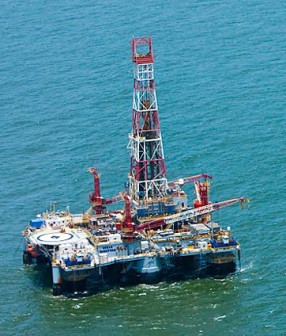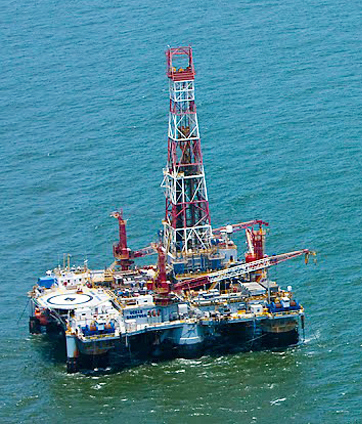Oil companies Repsol and CGX Energy Inc yesterday briefed stakeholders on their disaster management plans as part of the emergency and contingency measures not only in the event of an environmental mishap but also for the management of medical emergencies on board the rigs.
They made the disclosures at a meeting that the Ministry of Natural Resources and the Environment hosted with regard to addressing the emergency response, now that drilling has commenced offshore Guyana. The Atwell Beacon and the Ocean Saratoga – drilling for Repsol and CGX Energy Inc respectively – commenced operation about a week apart from each other in an unprecedented situation where two rigs were drilling at the same time offshore Guyana. The meeting took place at Red House and saw the presence of stakeholders in the oil and gas sector, persons from the Maritime Administration, conservationists concerned with the environment, the various sections of Guyana’s disciplined services and others.

He said that the equipment on hand to manage a cleanup include containment booms and dispersant systems in the event of there being a spill.
Speaking to the gathering, Giancarlo Ariza, Repsol’s Country Manager for Guyana said that unlike the CGX well, the Repsol operation comprises a high pressure, high temperature system which means that there must be continuous monitoring in place to ensure its safe operation. “The probability [for a disaster] is very low but we are planning for the worst,” he said. Ariza disclosed that the chances of Repsol finding oil is only 10 percent, and if oil is found it is not likely to be more than 300 million barrels.
He said that the company already has five locations in Guyana: its office in Duke Street, Kingston, a facility at the John Fernandes Wharf, a fuel bunkering station at Sol Guyana, a facility at the Ogle Airport for the company’s helicopters and the operational site.
“We have two command centres for dealing with emergencies; one of them is at our office [in Kingston] and the other is undisclosed for security reasons,” said Ariza.
He explained that because of bandwidth concerns, the company is linked to its offices in Guyana and in Spain through the Spanish communications giant Telefonica.
Health Safety and Environment Officer for Repsol Ronald Payne said that in planning the well a lot of thought went into the design, with a view to ensuring that the company was prepared for any eventualities.
He said that the plans meet the requirements of the MARPOL Convention, which is the main international convention covering prevention of pollution of the marine environment by ships from operational or accidental causes.
Payne said that the company first identified the worst case scenarios and then did an assessment of the impacts on the most environmentally sensitive areas and developed mitigation plans to minimize such.
Further, he said that the company intends to engage fishermen and carry out training with them so that they could be able to provide support in the eventuality of a disaster.
“We have real time pressure, temperature and background gas monitoring [in place],” he said, adding that there are mechanisms to ‘kill’ the well. He said too that there are blowout prevention control mechanisms in place. “We [also] issue Notice to Mariners [to advise them of our position,” Payne said.
He explained that the plans are tailored to respond to pirate attacks, fires on board the rig and vessels running aground. He said that when it is properly determined that the situation is too much to cope with, help will be immediately marshalled from Trinidad.
Payne said that for Repsol, the persons in charge of the rig will have the final say on whether to abandon it.
Further, officials from both companies disclosed that should the need arise each company would be prepared to render assistance to the other.
In terms of medical care, arrangements are in place with private hospitals for medivacs for specialized treatment overseas. However, officials said that the public health system in Guyana would have to be utilized for mass casualties.
According to Minister of Natural Resources and the Environment Robert Persaud, his ministry is charged with coordinating plans and policies for the effective management of the country’s natural resources in a sustainable manner.
“The EPA as the lead agency on environment management ensures the requirement of Strategic Environmental Assessments (SEAs) is conducted by both Companies and submitted to the Environmental Protection Agency and Guyana Geology and Mines Commission for review and approval,” he said. The Minister said too that the SEA in essence looked at the legal framework in which the activities are to occur and the possible environmental impacts and proposed mitigation measures.
The Minister said that the EPA has the responsibility to monitor these projects against the approved SEAs, the Environmental Authorisations and subsequent plans and reports emerging as a result of the Authorisation to ensure compliance. “Towards assisting in monitoring capabilities, the Companies are also required to submit monthly reports of progress made in relation to the conditions of the Environmental Author-isations,” he said.
The Minister said that like everything else, every action has a consequence so in petroleum drilling there are inherent consequences or risks.





